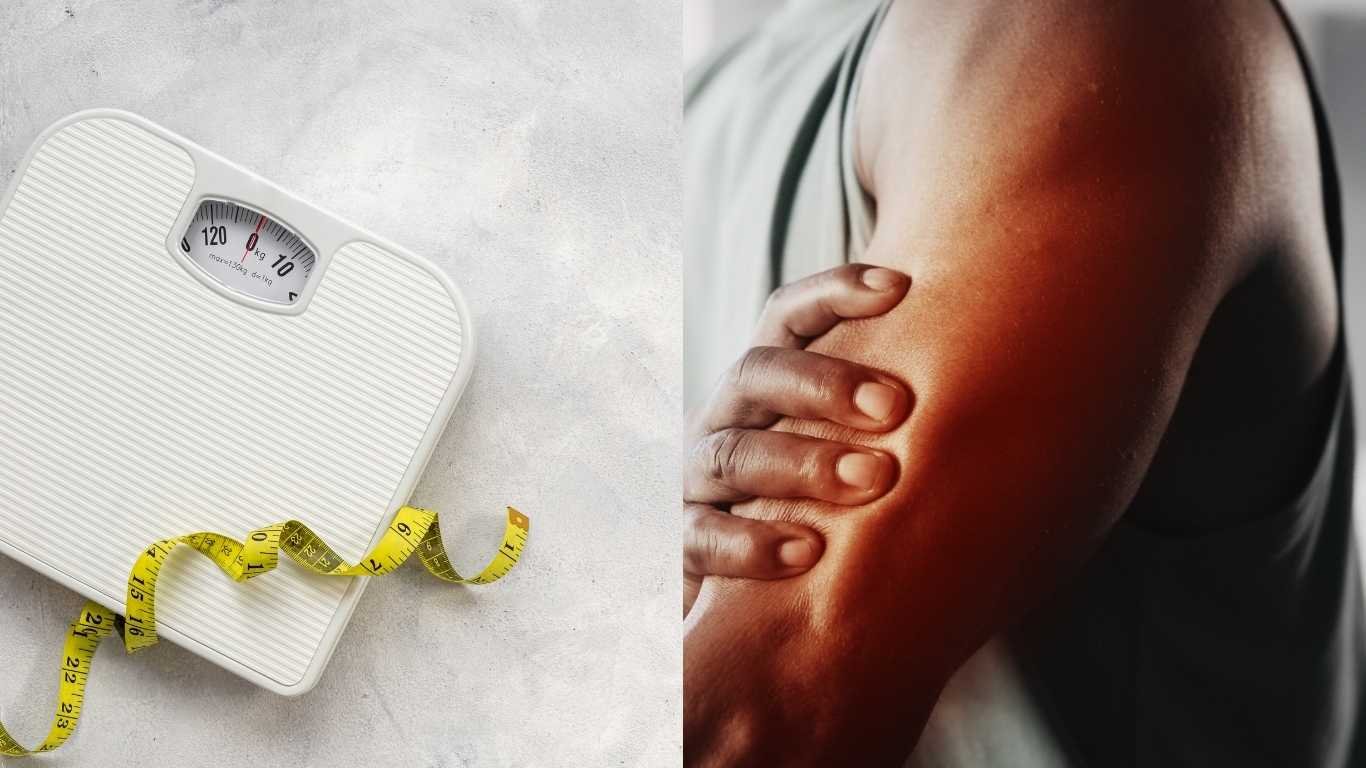When people look at mountain bikers, they usually see adventure, trails, freedom, strength, and an adrenaline rush.
But very few actually talk about the other side of it — the soreness, fatigue, wrist pain, numb hands, back stiffness, and sometimes even the mental exhaustion that comes after long rides.
So let’s talk real here — is mountain biking hard on your body? Or is it something your body just learns to adapt and get stronger with time?
What Mountain Biking Does Inside Your Body

Mountain biking is not like road cycling or casual gym workouts. It’s a mix of explosive power, constant balance, quick reaction, and endurance — all happening together.
When you’re on trails, your heart, lungs, muscles, and nervous system are all working at the same time, and that’s why it feels tough, especially in the beginning.
Your Muscles
The first thing mountain biking does is build strength. You’ll feel it in your legs, glutes, and core within a few weeks.
- Your quads and hamstrings handle all the climbs.
- Your glutes fire every time you push power on the pedals.
- Your core keeps you balanced every time you hit a turn, jump, or rough patch.
Even your arms, shoulders, and wrists get stronger — they’re constantly stabilizing you when the trail gets bumpy.
It’s a full-body workout — but it’s not like gym strength training, it’s more of a functional, controlled, and endurance-based strength.
If you ride daily, even for 30 minutes, your body begins to adjust faster. That’s why I always tell people to read What Happens If You Bike Every Day for 30 Minutes. It gives you a proper idea of how that daily consistency changes your stamina, energy, and body shape.
The Hard Side Most Don’t Talk About

Mountain biking can be rough. It’s not a soft sport. It pushes your joints, your grip, even your mind.
The constant vibration, steep climbs, and long descents take a toll if your body isn’t ready.
Common Struggles Riders Face
- Knee pain: It mostly happens if your saddle height isn’t correct or poor pedal position. Most riders ignore bike fit, which is a huge mistake.
- Lower back pain: It comes from a weak core or when you sit forward on the climbs for too long.
- Wrist and hand numbness: It commonly happens due to continuous pressure and vibrations.
- Shoulder or neck strain: Happens when your posture stays locked for hours.
Most of these are not actual injuries; they’re imbalances or poor setup issues.
Once you fix your bike fit and strengthen weak areas, 80% of these problems go away.
And yes, if you’re in your late 30s or 40s, it can feel even tougher at first. That’s when smart recovery and setup matter more than raw energy.
You should definitely go through Starting Mountain Bike at 40 – 10 Tips to Follow — that post breaks exactly how to ride smart when the body doesn’t recover as fast as it used to.
Is Mountain Biking Too Hard for Beginners?
No — but it’s hard in the beginning. Mountain biking challenges your balance, cardio, and coordination all at once.
If you haven’t ridden in years, the first 2–3 weeks can feel brutal.
Your lungs will burn on climbs. Your arms ache from controlling the handlebars. Your core shakes from trying to stay balanced.
That’s totally normal when your body is adapting to something completely new — constant micro-adjustments, uneven surfaces, and full concentration for long periods.
The trick is to start slow and build stamina.
Don’t hammer every trail. Mix in easier, low-heart-rate rides. Your body will start adjusting within weeks.
You’ll start feeling lighter, faster, and more controlled on trails.
And if you seriously want to last longer without dying halfway, read 9 Effective Ways to Build Stamina for Longer Mountain Bike Rides.
The Physical Effects — Good and Bad

Positive Effects:
- Cardiovascular Health: Your heart learns to work efficiently. Regular mountain biking lowers resting heart rate and blood pressure.
- Leg and Core Strength: You’ll feel more power in your legs, and your core becomes rock solid over time.
- Improved Coordination: Trail riding forces your brain and body to connect faster. Your reflexes literally get sharper.
- Weight Control: You can easily burn 500–800 calories per ride.
- Mental Clarity: You release endorphins that kill stress and anxiety.
Negative Effects (if done wrong):
- Joint Overload: Especially knees and wrists.
- Back Pain: From weak posture or stiff lower back muscles.
- Muscle Fatigue: If you ride a bike too much without recovery. It will cause soreness that doesn’t go away quickly.
- Numb Hands or Feet: Bad bike fit or over-gripping.
- Overtraining: The most ignored issue. You ride too hard, don’t rest, and start feeling drained instead of stronger.
Mountain biking itself isn’t dangerous to your body — but how you ride it decides whether it helps or hurts.
How Mountain Biking Actually Builds You Stronger
When done right, mountain biking improves multiple systems inside your body.
1. Cardiovascular System
Your heart learns to handle both high and low effort intervals.
On climbs, your pulse hits high zones; on downhills, it recovers fast. That variation is perfect heart conditioning.
2. Musculoskeletal System
It builds lean muscle, joint stability, and bone density.
The light impacts and resistance on trails actually make your bones stronger.
3. Nervous System
You start reacting faster. As you have to constantly scan things visually, and when you break quickly, and turn fast on the train, your brain responds sharply — something gym workouts rarely do.
4. Hormonal System
After intense rides, your body releases dopamine, serotonin, and endorphins — all mood-lifting hormones.
That’s why you feel calm and “reset” after a tough trail.
Does It Get Easier Over Time?
Yes. The first few rides break you down, but your body adapts quickly. Within 3–4 weeks:
- Climbing becomes smoother.
- Descents feel more natural.
- Grip and handling improve automatically.
- Muscles stop aching the next morning.
Your body basically learns how to distribute effort efficiently. You’ll push the same climbs with half the energy after a few consistent weeks.
Also, the more consistent you are, the less likely you’ll face injuries. Even short rides — 30–40 minutes daily — keep your joints lubricated and muscles active.
Preventing Pain and Injuries
You can’t make mountain biking “easy”, but you can make it painless.
1. Fix Your Bike Fit
Saddle height, handlebar width, and reach matter more than you think.
Even a 1-inch difference can change how your back and knees feel.
2. Strengthen Supporting Muscles
Add a few strength sessions weekly — squats, lunges, planks, push-ups.
Strong supporting muscles absorb trail impact better.
3. Learn Proper Body Position
Bend elbows slightly, keep core tight, and avoid locking your wrists.
For longer descents, stand slightly off the saddle — let your legs act as natural shock absorbers.
4. Recovery is Not Optional
If you skip rest, mountain biking will break you down fast.
Sleep 7–8 hours, stretch daily, hydrate properly, and eat right after rides.
5. Pedals Matter More Than You Think
Wrong pedals can create knee stress or limit control. Go through Clipless vs Flat Pedals – Which One Should You Really Choose? before you pick any. It explains what suits which riding style and what’s safer for your joints long-term.
Who Feels Mountain Biking Hard the Most
- Beginners: Body not adapted yet. They fatigue fast, arms and legs both sore.
- Older Riders: In old age, the body style less flexibility, and it recovers slowly. But experience balances it.
- Unfit Riders: Poor cardio and weak core. Every climb feels very tough.
- Overtrainers: If you ride a bike a lot without proper rest, you will burn out.
Conclusion
So, is mountain biking hard on your body? Yes, in the beginning. But that’s exactly what makes it worth it.
Your body struggles at first, your lungs scream, your hands tingle, and sometimes your knees protest — but then you’ll adapt.
Mountain biking won’t just shape your muscles — it reshapes how your whole body responds to challenges.
You’ll soon realize it’s not the body that limits you — it’s the way you prepare it. Once your body learns the rhythm, you’ll stop asking “is it hard?” and start saying “why didn’t I start sooner?”
FAQs
Is mountain biking bad for your knees?
It’s bad only when your bike fit is wrong or you overtrain without recovery. You have to set your saddle height properly, stretch your quads and hamstrings, and avoid grinding high gears uphill.
When done right, mountain biking will make your knees strong over time.
How long does it take for your body to adapt to mountain biking?
Usually around 3–4 weeks of consistent riding. Your muscles, lungs, and coordination all start working together by then.
You’ll feel smoother on climbs and won’t tire as quickly.
Why do my hands go numb while mountain biking?
That’s from excess handlebar pressure or vibration. Adjust your grips, relax your wrists, and don’t lock your elbows.
Padded gloves and a correct bike setup fix this problem fast.
Is mountain biking safe after 40 or 50?
Absolutely, if done smartly. Many older riders perform better because they ride with control and recovery in mind.

Ali is the founder of Mountain Bike Insider and an passionate rider with years of hands-on experience in mountain biking. From testing gear to exploring trails, Ali writes based on real riding knowledge to help others make smart, safe, and enjoyable biking choices. Every guide is built on research, personal use, and a passion for the sport.







